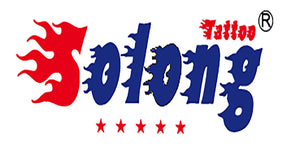Ensuring Sterility in the Tattoo Studio: Best Practices for a Safe Artistic Space
To many, a tattoo is more than ink on skin; it's a statement, a memory, a piece of one's soul depicted through art. It's the responsibility of the tattoo artist and the studio to ensure that this beautiful process is also safe and hygienic. Creating a sterile work environment is paramount to prevent harmful infections and cross-contamination. Let’s explore the essential guidelines necessary for maintaining a pristine studio.
Sterilization Protocol:
The foundation of a hygienic tattoo studio is proper sterilization. This goes beyond just cleaning and involves using an autoclave to sterilize equipment after each use. It's not enough to sterilize equipment; periodic spore testing should be conducted to ensure the autoclave's effectiveness.
The foundation of a hygienic tattoo studio is proper sterilization. This goes beyond just cleaning and involves using an autoclave to sterilize equipment after each use. It's not enough to sterilize equipment; periodic spore testing should be conducted to ensure the autoclave's effectiveness.
Disinfection Practices:
Disinfection of all surfaces with a medical-grade cleaner is critical. This includes tattoo machines, chairs, tables, and any other surfaces in the work area. Disposable covers can also be used for non-disposable items to further minimize potential contamination.
Disinfection of all surfaces with a medical-grade cleaner is critical. This includes tattoo machines, chairs, tables, and any other surfaces in the work area. Disposable covers can also be used for non-disposable items to further minimize potential contamination.
Barriers and Protection:
One-time-use barriers such as plastic wraps should be used on all equipment that comes into contact with the client. These barriers are disposed of after each session to prevent any risk of cross-contamination.
One-time-use barriers such as plastic wraps should be used on all equipment that comes into contact with the client. These barriers are disposed of after each session to prevent any risk of cross-contamination.
Personal Protective Equipment (PPE):
PPE such as disposable gloves and face masks are mandatory for tattoo artists. They should be replaced with new ones for every client. Additionally, artists should wear disposable aprons that are changed regularly throughout the day.
PPE such as disposable gloves and face masks are mandatory for tattoo artists. They should be replaced with new ones for every client. Additionally, artists should wear disposable aprons that are changed regularly throughout the day.
Hand Hygiene:
Artists must wash their hands before and after putting gloves on, after the removal of gloves, and any time the hands are contaminated. Proper hand hygiene is one of the simplest yet most effective methods to prevent the spread of infection.
Artists must wash their hands before and after putting gloves on, after the removal of gloves, and any time the hands are contaminated. Proper hand hygiene is one of the simplest yet most effective methods to prevent the spread of infection.
Waste Disposal:
Sharps containers for needles and other sharps must be part of the studio's setup. These containers prevent accidental needle sticks and safely contain hazardous materials until they can be properly disposed of.
Sharps containers for needles and other sharps must be part of the studio's setup. These containers prevent accidental needle sticks and safely contain hazardous materials until they can be properly disposed of.
Client Care:
Before tattooing, the area must be cleaned with an appropriate antiseptic, and the skin prepared with a disposable razor if required. Such measures reduce microbial presence and prepare the skin for a safe tattooing session.
Before tattooing, the area must be cleaned with an appropriate antiseptic, and the skin prepared with a disposable razor if required. Such measures reduce microbial presence and prepare the skin for a safe tattooing session.
Education and Training:
Continuous education on sanitary practices is essential in this evolving field. Regular staff training to update on best practices in infection control should be mandatory.
Continuous education on sanitary practices is essential in this evolving field. Regular staff training to update on best practices in infection control should be mandatory.
Aftercare Instruction:
No tattoo studio hygiene practice is complete without detailed aftercare instructions for the client. Good aftercare prevents infection and ensures the longevity and beauty of the tattoo.
No tattoo studio hygiene practice is complete without detailed aftercare instructions for the client. Good aftercare prevents infection and ensures the longevity and beauty of the tattoo.
Conclusion:
The guidelines highlighted above ensure that a tattoo studio remains an oasis of creativity without compromising safety. It is through strict adherence to sterility and hygiene protocols that trust and reputation are built. In a world where the line between art and safety is as fine as the needles we use, let's commit to best practices for the health and satisfaction of our clients.
The guidelines highlighted above ensure that a tattoo studio remains an oasis of creativity without compromising safety. It is through strict adherence to sterility and hygiene protocols that trust and reputation are built. In a world where the line between art and safety is as fine as the needles we use, let's commit to best practices for the health and satisfaction of our clients.









